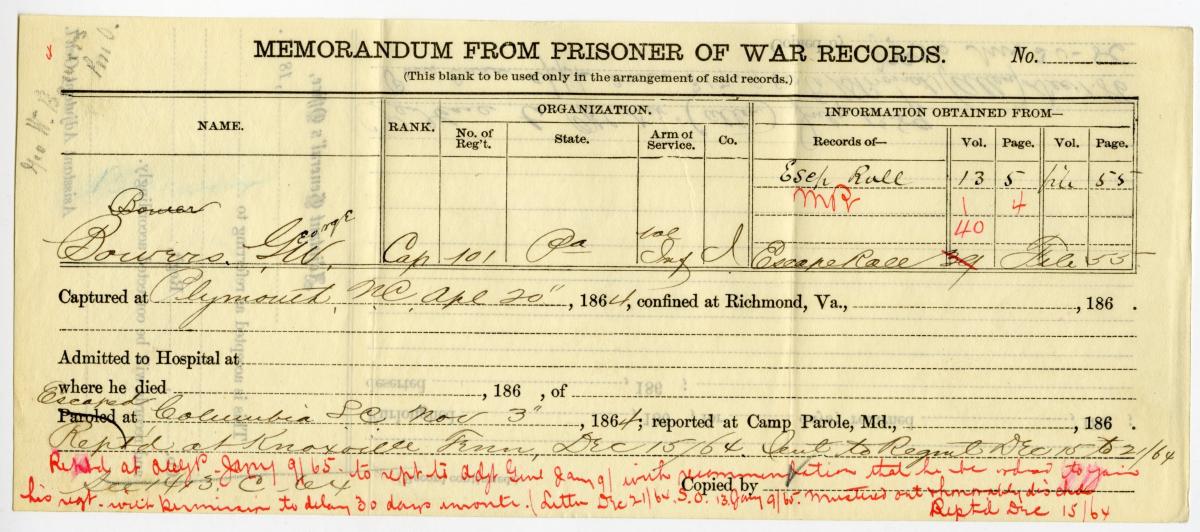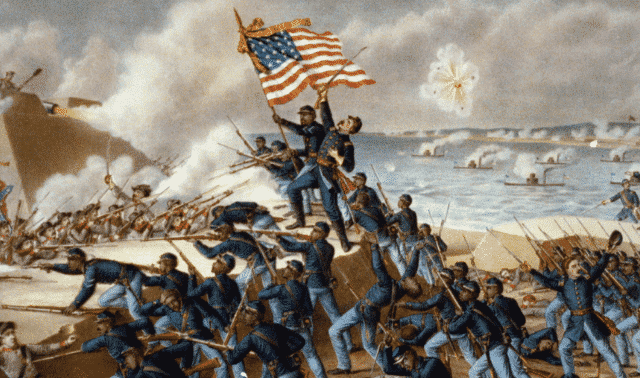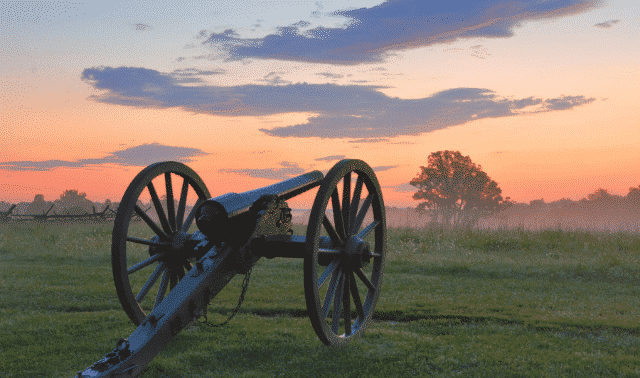Sign up for the Family Tree Newsletter! Plus, you’ll receive our 10 Essential Genealogy Research Forms PDF as a special thank you.
Get Your Free Genealogy Forms
"*" indicates required fields
Something’s missing on the graves of many Civil War veterans: recognition of their service, whether they died during the conflict or long after its end. Some tombstones have been destroyed, some have lost their identifying information due to weather or vandalism, some have been removed, and some never existed in the first place.
Good news: If your Civil War ancestor is missing a veterans marker, you can rectify the situation by having the stone replaced or a marker added at little to no cost to you.
Keep in mind that you can do this for Union or Confederate veterans. Because the process can take some time, hold off scheduling any ceremonies or memorial services until you have an estimate of the marker’s arrival date — and get started now. We’ll walk you through the process of making sure your veteran is recognized.
ADVERTISEMENT
1. Find the grave.
The first step, of course, is to locate the veteran’s final resting place. This information is most often located on a death certificate or register, but also may be in an obituary or a military service or pension record. If your ancestor died in a veterans’ home, that institution may have his cemetery information. You also can search websites such as Find A Grave and Interment.net. Also check the Nationwide Gravesite Locator for burials in Department of Veterans Affairs (VA) national cemeteries and state veterans cemeteries (those listed in the database may or may not have military markers).
Of course, if you discover your veteran’s grave already has a military marker, you don’t need to do anything else. Another relative might’ve done the work to get a marker from the VA.
If there’s no headstone, your ancestor is entitled to the honor of a VA stone, provided you can show he was honorably discharged. You can request a replacement headstone if the inscription is so worn it can’t be read, or if the stone is otherwise damaged beyond repair.
ADVERTISEMENT
If the existing headstone is in good shape but lacks an identification of honorable service, the VA won’t replace it for deaths earlier than Nov. 1, 1990. But you can petition the local Sons of Union Veterans of the Civil War (SUVCW) camp to provide a Grand Army of the Republic marker to be mounted on the existing stone. The SUVCW has chapters all over the United States; find one near the cemetery at suvcw.org. GAR and veterans markers also are available for purchase from many flag companies, such as Balch Flags and Eagle Flag.
If the soldier’s burial location is unknown, you can order a memorial grave marker from the VA.
2. Research the discharge.
Your veteran must have been honorably discharged to receive a military marker. You’ll find this information in his military service records — you can request copies from the National Archives and Records Administration (NARA) by following the instructions at Archives.gov. Confederate service records, as well as those of Union soldiers from Southern and Western states, are on subscription site Footnote. Pension records also might have the information. Union pensions are available through NARA; some are digitized on Footnote. For Confederate pension records, check with the state archives in the state from which your ancestor served.
Some soldiers discharged in unconventional circumstances didn’t receive official discharge documents. You can use a muster-out roll, which records the discharge date and final pay, or any record that indicates the veteran wasn’t dishonorably discharged. For help finding Civil War records, see our top 10 websites guide and the Spring 2011 Discover Your Roots special issue (available from Family Tree Shop).
3. Obtain proof of death.
It might seem silly, but you’ll need to provide proof your Civil War veteran is deceased. If you can’t find a death certificate, look for an obituary, cemetery records indicating the decedent is buried in that particular location, a widow’s pension application (which required proof of death), or another similar document confirming the demise of the veteran.
4. Fill out the form.
With the necessary documents in hand, your next step is to complete the application. You’ll need VA Form 40-1330, Application for Standard Government Headstone or Marker for Installation in a Private Cemetery or a State Veterans’ Cemetery. You can download it here.
5. Get the cemetery’s permission.
Before you can submit the application, you must secure permission from the cemetery where the stone is to be placed. Contact the cemetery and ask for the staff member who can authorize the receipt and placement of the stone or marker (and maintain contact with that person throughout the process so your request doesn’t get misdirected). That person must sign the form, which you can do by fax or e-mail if necessary. See the July 2010 Family Tree Magazine for help locating and contacting a cemetery office.
The VA ships stones and markers without charge, but will send them only to a street address at a business (such as a mortuary or cemetery), not to a PO box or residence. If the stone will be placed in a remote cemetery or one with unclear ownership, contact the VA for advice at (800) 697-6947.
This is also your opportunity to find out what the cost will be to have the stone or marker placed on the grave; the fee may be waived when placement is in a veterans’ cemetery. The cemetery will expect payment when it receives the stone, if not before. If the cost is prohibitive, you can see if relatives would chip in or organize a fund-raiser.
6. Decide on a marker.
Your stone or marker choices, which you’ll indicate on the application form, are varied. Stones may be upright granite or marble, with a special style available for Civil War veterans; flat marker options are bronze, granite or marble (a bronze plaque is available for mausoleums). The cemetery may ask you to go with a certain style, so ask your contact there. You’ll also be able to select the inscription within space limits and, optionally, a recognized emblem of religious belief. Pictures of the stone and marker styles, as well as belief emblems, appear on an information sheet that accompanies the form.
7. Recognize your veteran.
Once you send the form and the genealogical documents you dug up, how long does it take for the marker to be approved, created and shipped? It varies, depending on demand. Your wait might be as short as a month, or it could go on quite a bit longer. To get an estimate of the time frame, contact the VA by phone.
The cemetery will probably place the stone as soon as it is received to avoid misplacing the monument or damaging it while in storage, so work with your contact there if you want to plan a placement ceremony.
You could opt to hold a memorial service after the stone is placed. How much a celebration you choose to have, if any, is a personal matter. Your event may take the form of a family reunion, a religious ceremony, a patriotic event on the Fourth of July or Veterans Day, or a combination of these. Besides family and friends, consider inviting the local camp of the SUVCW, a Civil War re-enactment organization, scouting troops, historical or genealogical society members, civic leaders, the newspaper, or anyone else who might find the event significant. These people might help in organizing the event and maintaining the newly placed stone or marker.
Finally, request that your veteran now be included in the SUVCW’s National Graves Registration Database so future descendants can find it.
More Online
Free Web Content
For Plus Members
Family Tree Shop
From the May 2011 issue of Family Tree Magazine
ADVERTISEMENT




